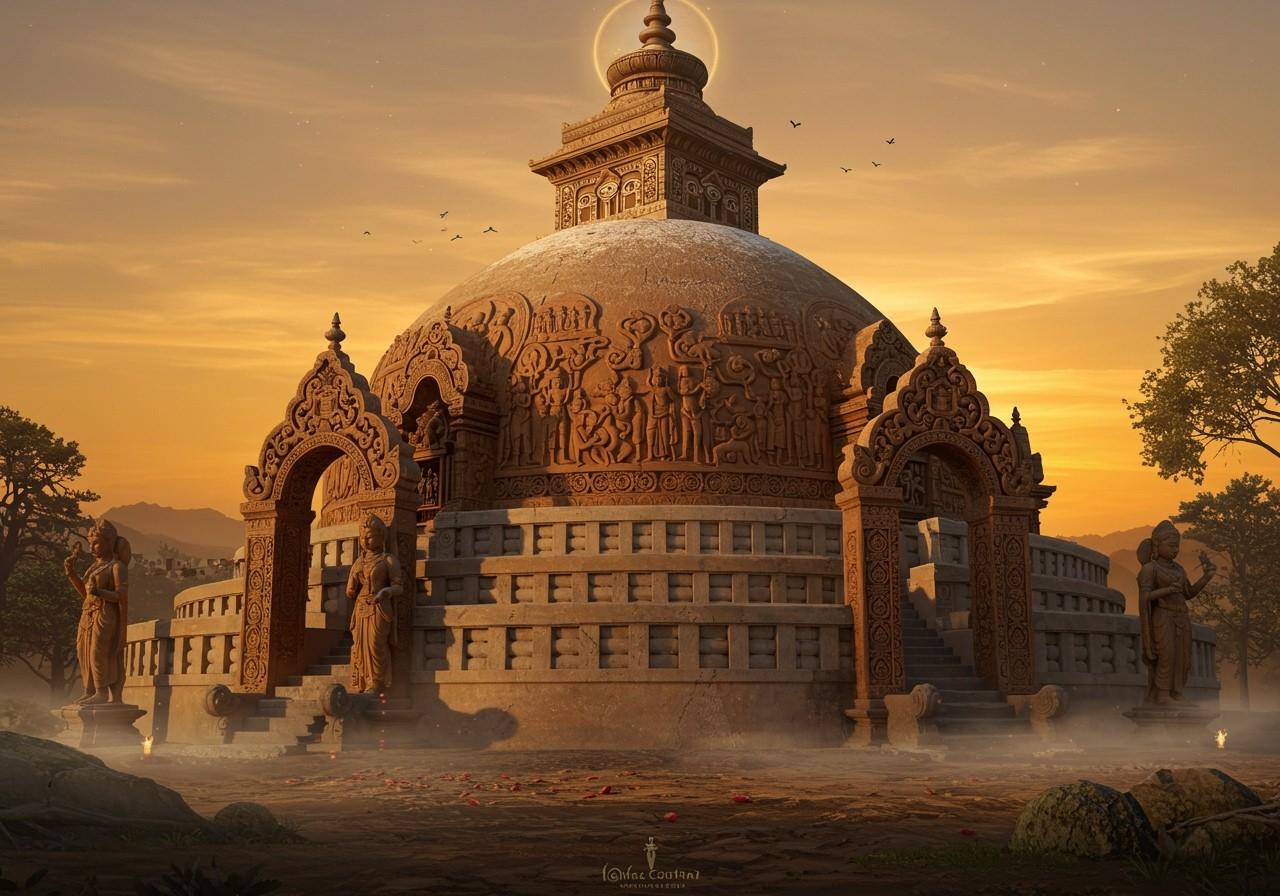
The Bharhut Stupa stands as a testament to India’s rich cultural and religious heritage. This ancient Buddhist monument, located in the Satna district of Madhya Pradesh, is renowned for its intricate carvings and historical significance. It offers a glimpse into the artistic and spiritual endeavors of early Indian civilization, specifically during the Shunga Empire (mid-2nd century BCE). Let’s delve into the history, construction, and significance of the Bharhut Stupa, providing a comprehensive understanding of its enduring legacy.
What is the Bharhut Stupa?
The Bharhut Stupa is an ancient Buddhist stupa known for its elaborate sandstone railings (vedika) and gateways (toranas) adorned with exquisite carvings. These carvings depict Jataka tales, historical narratives, and various motifs symbolizing the life and teachings of Buddha. The stupa serves as a significant archaeological site, offering valuable insights into early Buddhist art and architecture, and is considered among the earliest examples of narrative Buddhist art.
When was the Bharhut Stupa Built?
The Bharhut Stupa dates back to the Shunga Empire in the mid-2nd century BCE. While some sources suggest an initial construction during Emperor Ashoka’s reign in the 3rd century BCE, the intricately carved vedika and toranas were added during the Shunga period. This timeline highlights the stupa’s enduring significance and continuous embellishment over centuries.
Who Built the Bharhut Stupa?
While the initial construction might be attributed to Emperor Ashoka, the significant enhancements and intricate carvings were added during the Shunga dynasty. King Dhanabhuti is recognized as a major donor for the stupa’s embellishments, playing a crucial role in shaping the monument we see today.
The History of Bharhut Stupa
The history of the Bharhut Stupa unfolds across centuries. It reflects the patronage of Buddhism, particularly during the Shunga period, and the evolution of Buddhist art and architecture. Inscriptions on the stupa mention donors like King Dhanabhuti and artisans, providing glimpses into the socio-economic conditions and religious fervor of ancient India.
Construction Details of the Bharhut Stupa
The Bharhut Stupa’s construction involved meticulous craftsmanship. The core structure was likely made of brick, while the outer surface was adorned with intricately carved red sandstone for the vedika and toranas. These carvings depict scenes from Buddha’s life, Jataka tales, and symbolic motifs, showcasing the artistic skills of the time.
Significance of the Bharhut Stupa
The Bharhut Stupa holds immense religious, historical, and artistic significance. It is a key site for understanding early Buddhist art and offers a visual narrative of Buddha’s teachings. The inscriptions provide valuable historical data, shedding light on the patronage of Buddhism during the Shunga period.
The Discovery of Bharhut Stupa
The Bharhut Stupa was rediscovered in 1873 by Major General Alexander Cunningham. This rediscovery brought to light many sculptures and carvings, which are now housed in the Indian Museum in Kolkata, preserving these invaluable artifacts for future generations.
Poojn.in: Connecting You to Buddhist Heritage
At Poojn.in, we offer a wide selection of authentic Buddhist items to enhance your spiritual practice and connection to sacred sites like the Bharhut Stupa. Our collection includes:
- Buddha Statues: Explore our collection of pure copper and brass Buddha statues, perfect for creating a serene atmosphere in your home shrine. We offer a variety of sizes and styles to suit your preferences.
- Meditation Supplies: Enhance your meditation practice with our traditional meditation cushions and mats, crafted for comfort and support. We also offer genuine sandalwood prayer beads (mala) for mindful recitation.
- Incense and Holders: Create a sacred ambiance with our pure copper incense holders and burners. Choose from a variety of natural incense sticks and cones made from traditional ingredients.
Visit www.poojn.in to explore our complete range of Buddhist worship supplies. We offer secure packaging, fast delivery across India, and expert guidance from our customer service team. You can also find beautiful Radha Krishna statues here and exquisite Lakshmi Ganesh murtis here.
Conclusion
The Bharhut Stupa remains an archaeological marvel and a vital link to India’s ancient Buddhist heritage. Its intricate carvings, historical inscriptions, and architectural significance make it a treasure trove for historians, archaeologists, and art enthusiasts alike. Exploring this ancient monument offers a profound understanding of early Buddhist art and its lasting impact on Indian culture and spirituality.


